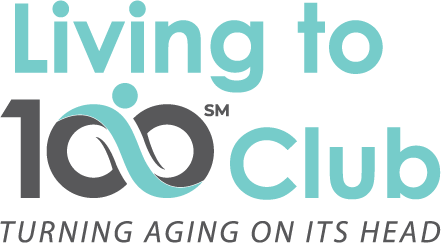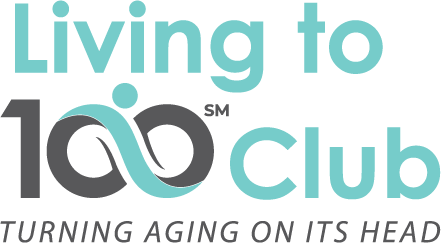Living to 100, or at least the mindset to live longer and healthier, requires us to make decisions every day about what behaviors – like eating, staying active, maintaining social connections, and pursuing meaningful, purposeful activities – will help us live our best life. And when it comes to diet and good nutrition, we try to stay informed about the latest scientific findings on healthy eating. But we have to admit, there are conflicting reports (are eggs ok to eat regularly?), findings are reversed or contradicted by new research (is coffee good or bad?). And we always have fad diets and junk science lurking in the background.
One of the concerns about knowing who to believe when it comes to healthy eating is that many programs are touted by celebrities or other professionals with no background in evidence-based nutritional science. According to Rebecca Reynolds, nutrition lecturer at the University of New South Wales in Australia, government guidelines and advice from doctors, nutritionists, and dietitians generally recommend adjusting our diets cautiously. She says, for example, that reliable guidelines never support the elimination of entire food groups or elements, like dairy, gluten, legumes, grains and fruit from the diets of most people.
However, nutrition science is having a profound impact on the public health here in the U.S. and around the world. One nutritionist, Dr. P.K. Newby, an award winning educator at Harvard, states that 80% of chronic diseases are preventable by changing certain lifestyle habits, including what we eat, and that diet is the leading factor that contributes to these chronic conditions. According to Newby, many countries have now reached consensus that science does have the answers and there is broad agreement among the experts about diet and health. Her book, Food and Nutrition, may be one of the better resources that brings scientific research findings to the everyday consumer.
Scientifically-based Food Recommendations
Here are several countries’ and institutional recommendations: United States; Canada’s Food Guide; Harvard’s Healthy Eating Plate; Brazil; and Sweden. If you peruse these various guidelines, the recommendations are overwhelmingly consistent.
Generally-accepted, world-wide guidelines:
- More than 75% of your meal should comprise vegetables, fruits, and whole grains.
- Protein sources should include beans, peas, nuts, seeds, and soy.
- Limit consumption of processed foods (canned fruits in syrup, cheese, and breads). And avoid consumption of ultra-processed foods (salty and fatty packaged snacks, sugar-sweetened beverages, and sweetened cereals).
- Consumption of low fat dairy products is recommended.
- Plant-based diets are more sustainable due to the high energy inputs and the environmental damage of livestock. Sustainable diets are those with low environmental impact, are protective of biodiversity and ecosystems, and are culturally accessible and affordable.
- Less red meat (no more than 4 times a week). And avoiding processed meat products due to their high salt content and saturated fats.
- See this detailed article about greenhouse gas emissions caused by livestock from the Food and Agriculture Organization of the United Nations.
- Use oils, fats, salt, and sugar in small amounts. Most of the salt that is consumed occurs naturally in many foods such as bread, cheese, meat products, and ready-to-eat meals. Therefore, we should limit adding more to these foods.
- Saturated fats are not good for us. These are found in butter, palm oil and coconut oils, as well as beef, lamb, pork, cheese, and sausages. However, healthy fats are unsaturated, as found in olive and peanut oil, avocados, and fatty fish like salmon and mackerel.
- Shop in supermarkets and farmers’ markets where varieties of natural and minimally processed foods are sold.
- Swedish dietary guidelines simplify food recommendations, by suggesting these: MORE vegetables, fruits and berries, fish and shellfish, nuts and seeds. Switching from white flour to whole grain is good. So is switching from butter-based fats to vegetable fats and oils, and high-fat dairy products to low fat dairy products. And LESS red and processed meat, salt, sugar, and alcohol.
- Diets with high plant consumption and low fat consumption are better. They may offer a buffer effect against cognitive decline and the onset of Alzheimer’s disease.
Refer to any of these guidelines for solid, evidence-based prescriptions and proscriptions about what to eat. They are colorful, easy to read and follow, and are practical and well within our “reach.”
However, despite these recommendations, there is still considerable confusion among the public – at least in the U.S. The International Food Information Council has surveyed American consumers 13 times. It found again in 2018, 80% of the population reported receive conflicting information about food and nutrition. Other findings from their survey revealed:
- a) familiarity of a product outweighs any rating of its healthfulness
- b) there has been a 50% increase in the importance of sustainability from the previous year
- c) trust in government agencies telling consumers what to eat or avoid appears to be on the rise
- d) 78% of those surveyed report making changes in their eating habits based on recommendations from health care professionals
- e) Americans consume less fruit and vegetables than recommended, because of lack of access and quality.
One of the overall conclusions from the IFI Council is that consumers in fact do have desired health outcomes but are unsure how to achieve them. Health care professionals will find a fascinating collection of graphs summarizing the survey results in this article.
Closing
To stay current and make informed decisions about healthy eating, refer to any of the countries’ or institutional guidelines referenced above. If Dr. Newby and so many other health authorities are right about how poor choices in eating habits can contribute to chronic diseases like diabetes, high blood pressure, and coronary heart disease, think of the possibilities for our future when we make more of the right choices. Think of the upside to making alterations in what we consume, based on the facts now available to us. Think of the benefits of shifting our behaviors toward eating patterns that are incompatible with diets that contribute to high blood pressure, diabetes, or heart disease.
And think of living longer, healthier, and happier. So, let’s stay positive about making the right choices for ourselves, for our loved ones, and for our future. And be sure to take the necessary steps to stay informed.
Dr. Joe Casciani is the owner and Chief Curator for the Living to 100 Club, where we are building a community dedicated to living our best lives and offering inspiration about staying positive and making it over the hurdles.


